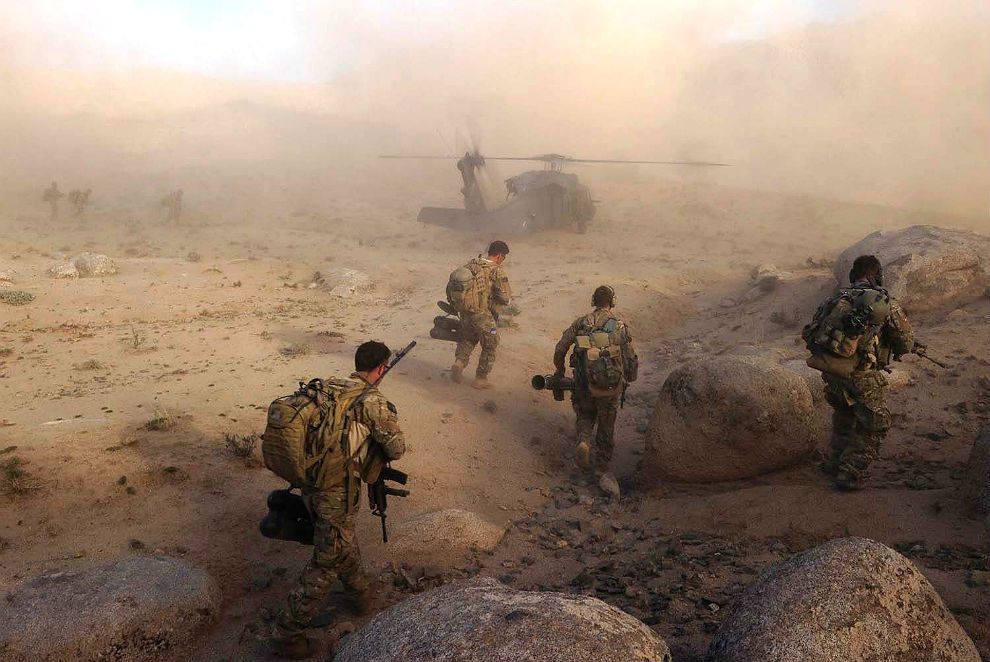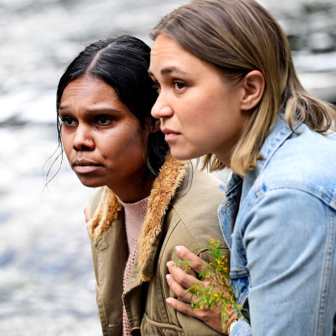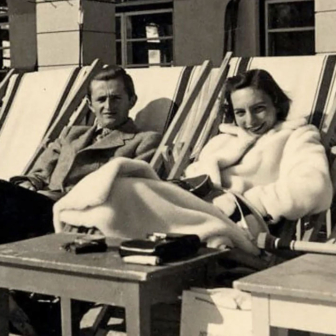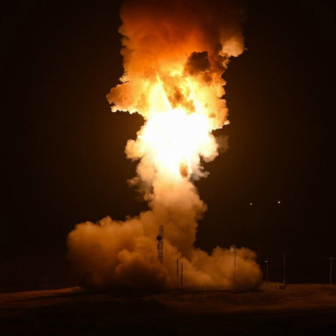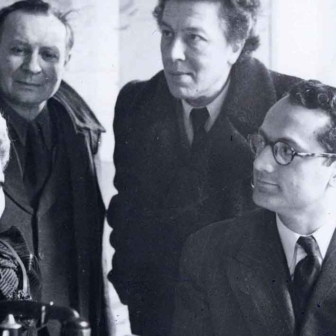“When that back ramp went down, the smell and the heat – it was just like a fire. All the oxygen that was inside the plane just got sucked out, and all this new stuff come in.” For Australian soldiers on their first mission in Afghanistan, this sudden exchange of atmosphere was the beginning of an exposure to another order of reality, one for which idealism and military ambition were the worst kind of preparation. As the lines are spoken in voiceover, we see the hazy figures of uniformed soldiers passing each other in a dense mist of clay dust. The arriving troops are energised and purposeful; those taking their places for the return trip are thinner, scruffier, quieter.
This scene opens the second of three programs in the new documentary series Afghanistan: Inside Australia’s War, the third of which will be aired on ABC on Tuesday night. Writer and director Victoria Midwinter Pitt has provided an overarching commentary, read by Dan Wyllie, that fills in the political context and military rationale for the missions undertaken by the Australian Defence Force in Afghanistan between 2001 and 2010.
What is distinctive about the series, though, is the fact that most of the narrative and much of the imagery is provided by the soldiers themselves. Footage from helmet cameras equipped with night-vision technology accompanies the recollections from those who were there, making us witnesses to critical incidents as they unfold in all their confusion. If the images we are watching jerk and spin, rarely affording any continuous sense of orientation, that’s how it was. As the producers claim, we see it as they saw it.
Much of the first episode, “Acts of War,” is devoted to reviewing the political framework of Pentagon warmongering following the 11 September 2001 attacks on New York and Washington. Within a day, says Lieutenant General Peter Leahy (chief of the army, 2002–08), “the US had defined the meaning of these acts.” It was to be a monumental struggle of good versus evil, as president George W. Bush said in an address from the Oval Office. Bush is shown standing amid the firefighters in the ruins of the World Trade Center, talking through a megaphone. And John Howard is there on the scene of so many of these presidential displays: the Australian prime minister being honoured, being moved, sharing “the shock and resolve of the moment,” as he put it.
Australia’s defence forces were immediately on the alert. Soldiers in training understandably long for action, and here, as one of them says, was a legitimate fight. “You bewdy! I will go in a heartbeat. This is what I joined to do.” Invading another person’s country didn’t come into it, says signaller Martin Wallace. “We were there to kick out a bunch of ratbags – it was like pulling on the green and gold for Australia.” It’s clear these sentiments are being recalled now with some irony.
From the moment when they walk out from the troop carrier into the Afghan dust and set off across the monochrome landscape, clarities of all kinds begin to crumble. Everything here, it seems, is rubble and dust. Lone figures on the side of the road, dressed in turbans and robes, watch the convoy with blank faces. Children crouch amid the broken mud walls of the villages. A few stalls sheltered under strips of canvas form the market. It’s like a scene from a movie about the bible story, says one officer.
Yet any idea of rounding up the enemy and showing the superiority of a disciplined First World army over a bunch of ragtag anarchists was pure hubris. As the Australians approached Kandahar, where the Taliban were gathering, the enemy leaders slipped out of the town and their armies melted into the streets. Time and again, we hear descriptions of the Taliban simply disappearing, becoming indistinguishable from the market traders and the workers in the fields. Out in the remote locations where they set up their compounds, they seem to move like water, draining down holes and flowing along rifts in the hillside. It’s always the Taliban that do the surrounding, appearing from nowhere with no warning. If there is any sign of coming danger, it is silence, the purity of a silence in which you can hear footsteps several hundred metres away.
The absurdity of the phrase “war on terror” is learned the hard way. As Leahy says, “This was not war as we understood it. Terrorism – it’s everything and nothing – you can’t find its capital or its homeland.” Yet when an individual enemy subject comes into focus, the inequalities are devastating. A soldier describes shooting a man who stood up to fight on the edge of a bombed village, then doing a quick search of the body. The rummage yields a comb, a mirror, a picture of a child, and a pathetic cache of bullets, most of which wouldn’t fit the man’s weapon. That’s your $10 Taliban, as the soldier says, but by this time the Australians are hardened by recent losses on their own side.
Tim Owens, one of the most compelling of the SAS narrators, speaks about the loss of his friend, Trooper David Pearce, when the convoy drove over an improvised explosive device. “From that moment,” says Owens, “it was real.” Pearce’s commanding officer, barely able to keep his face in order as he speaks, says he wanted to write to the widow. He felt responsible. But was the impulse to write about her or about himself? We see the troops lining up to salute the coffin as it is loaded onto the plane, and the feeling of devastation is palpable. It’s about more than the loss of one man. It’s about being in a place so utterly strange that none of them can claim any reliable understanding of what all this is about.
Back home in Australia, John Howard echoes the lines almost verbatim. The death of an Australian soldier is when reality sets in. Howard looks a little tearful. He felt responsible, he says. He wrote to the family. Yet Howard’s face as he says this is a world away from that of the officer who dealt with the situation in Uruzgan. It’s the difference between sentiment and trauma.
Watching these documentaries for the first time, I found myself wishing the politicians had been left out. There was something grating about crossing from the zone of military engagement to that of propaganda narratives and political image-making. Watching the programs again on iView, I was aware of how intricately they are edited to accentuate the interdependence of the soldier and the politician. If the cross-cutting grates, so it should.
Bush plays host to Hamid Karzai in Washington, and they address the media. Karzai says the Taliban are defeated. In Australia, Howard is on message. Things are much better in Afghanistan, he says. By 2005, the message has got tangled up in some ugly stuff, including the Bali bombings. The Taliban are everywhere, it seems, and Afghanistan is wracked by a spate of suicide bombings. New taglines are called for, and Shock and Awe is replaced by the campaign for Hearts and Minds. Australia is to send a contingent of engineers to build schools, roads and hospitals.
The infantry commanders, according to Leahy, were aghast. “The supreme requirement of government is to set a task,” he says. “To set a task that can be achieved.”
Clare O’Neill, one of the young engineers on the mission, admits to having been an optimistic child with grand ideas of making a difference. On the ground, she learns fast. Cultural issues have to be negotiated before they can even start putting in hot water for the maternity hospital – childbirth, according to the Taliban, is to be managed by the will of Allah, not put into the hands of nurses. But O’Neil works in collaboration with a savvy matron at the hospital to get around the Taliban restraints. There was a glimmer of hope, she recalls. Schools were opening. The local people could see another kind of future opening up. Soon the Taliban might become irrelevant to them. But O’Neil and her colleagues are betrayed along with the local people.
Hearts and Minds was a one-eyed strategy. The infrastructure initiatives were badged as collaborations with the Karzai government, which was swindling its own people every which way. Cracks in the partnership philosophy opened wide. Uruzgan was under the control of a corrupt and brutal regime, and the Australians had signed up as its collaborators. So they came under attack from the very people they had set out to help.
In episode three, we see the next phase of the campaign – building the Afghan army – also losing its rationale. Ultimately, the ancient tribal animosities of the place will determine all outcomes. Any hopes of creating a peacekeeping army from Afghan soldiers on home soil were dashed as the death toll ratcheted up, rising to over 2000 among the Afghan security forces during 2010.
One of the most valuable insights emerging from the series – largely through the skilled structural editing – is that the First World participants in this conflict are narrative-driven. Narrative has a lot to answer for. From the political leaders who wanted to play out a melodrama in which they would defeat the Axis of Evil, to the soldiers who felt they were putting on the green and gold for Australia, and the reconstruction teams who wanted to win Hearts and Minds, the motivating factor was a storyline in which they themselves would be featured in a positive role. As for the Afghan people being written into the script, they just wanted enough food, enough water, and not to be invaded. Stable government would be good. Schools, roads and hospitals would be even better, but if ultimately all they were being sold was someone else’s story of how good things are getting, they were not buying it.
Some of the hardest scenes to watch are not the battle sequences but those in which Bush and Howard play out their roles. They are so visibly moved by the stories they have made for themselves. A few years later, Julia Gillard addresses the Australian parliament as prime minister, her voice faltering as she reads lines from a poem by James McAuley: “I never shrank with fear / But fought the monsters of the lower world.” Tony Abbott, as opposition leader, responded in a similar register, quoting Charles Bean’s account of the Anzacs. “That to me isn’t a strategic debate,” comments Leahy. “That’s a Juba fest.”
Reality is elsewhere, and it is not they who will face it but the defence force personnel for whom they profess such a deep and abiding respect. The young men and women who emerge from the troop carriers on their first mission are rapidly stripped of any sense of narrative coherence, and begin to engage in a tougher form of learning. “There’s a lot of answers in fighting,” says one SAS officer. “I learned a helluva lot from war. There’s a lot of powerful information. It’s all very naked, very honest.”
Reality isn’t all bad. The series ends with an inventory of the material achievements that are the legacy of Australian ventures in Afghanistan. Those who served in the Australian Defence Force missions are assured, with some justification, that they can be deeply proud of what they have achieved. But they have brought another legacy home with them.
As veterans, they carry memories of an order of experience to which their fellow citizens in Australia have not been exposed. If they suffer too much from the flashbacks and replays of their own exposure, they will be diagnosed with what is bizarrely called post-traumatic stress disorder. Bizarre, because there is no “post” in this condition: traumatic experience is never over. It is not stress, but distress, of the most acute kind. And it is not a disorder originating in the person, but rather the consequence of witnessing the disorder of the world.
“Humankind cannot bear very much reality,” T.S. Eliot wrote, in one of the great statements about trauma and traumatic experience. Veterans suffering from so-called PTSD are people who have seen too much reality, yet for many of them this is preferable to a way of life back home. Left to cope as individuals rather than members of a corps, they are caught between two incommensurate worlds. In the final program, one officer tells us he went from being in charge of a group of men to being a patient in a mental hospital. No wonder so many of them say they would go back in a heartbeat, in order, as one puts it, “to be whole again.” •
